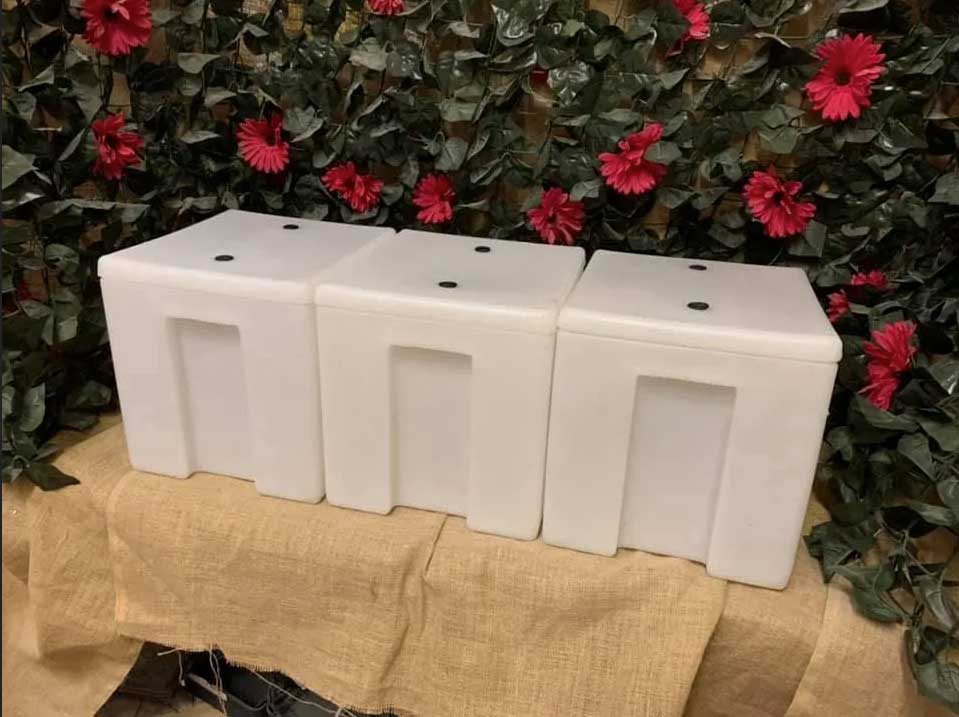Composting down Humanure on a boat.
As a boater of 20 plus years I have used every off grid toilet solution on my boats.
I first used a separating compost toilet about 9 years ago, and was so impressed that I started to make and sell them.
Composting toilet is a misleading term and we always make people aware of this, as no composting goes on in the actual toilet. Unfortunately it’s the name that people search for online, so it’s one of the things we need to call them to come up on the search list.
It is a collecting system that separates the liquid from the solids… making everything easier to manage and transfer to the secondary containers, which is where the composting happens.
Separating the liquid from the solids is what also stops any smells, so as long as the urine is emptied regularly and the solids are covered with a carbon material ( we recommend small wood shavings ) then it’s a dream to manage.
At Strumpet and Trollop Ltd our customers are using our products in many different Off Grid living situations, and 30% of them are overseas. Most are land based, and have space for a couple of wheelie/ composting bins that they can dedicate to composting down the content of the toilet bucket.
Many who use in campers, caravans and boats also still have a home on land that they can transfer the content of the toilet to secondary containers in their gardens.
For those on boats who have no other living accommodation we always recommend a three bucket system. This involves transferring the contents of the toilet bucket into another (never letting the toilet bucket get more than half full before transferring) where you can regularly mix a couple of times a week, adding more wood shavings where needed and giving it time to start the composting process.
This really isn’t an unpleasant job. Many are very surprised at how inoffensive a bucket of dry poo and wood shavings can be. There is a real sense of achievement once you see it start to look like compost.
Composting buckets can be stored on the roofs of boats, or in engine bays. A good sealed lid is needed, and because there should be no smell you can even store under beds if there is available space there.
By the time the 3rd bucket is full, then the first one should be composted down enough to then bag in compostable bags in smallish quantities. (The volume goes down as it composts) This can then be safely disposed of or used for your own growing needs.
Up until recently bagging and binning in compostable bags and putting them into CaRT bins was an option. We always advised that if this was the only option that it should be done in very small amounts (5kg) and always double bagged.
It appears that this may not be an option for the foreseeable future, and discussions need to be had with the trust about providing some alternative bins for compost, because enough facilities are not available for the growing boating community in the urban areas for cassette and pump out toilets that are in use at the moment.
I have always found that most boaters are very responsible and respectful of the environment, and will look after the area surrounding them.
Unfortunately there will always be a handful of people who don’t, and the people who are miss-managing their compost toilet are causing problems in their general area, would also miss-manage their cassette and pump outs if the find themselves in a situation where they can’t find facilities to empty them.
When done properly, I still believe that composting the contents of your off grid waterless separating toilet is they easiest, most convenient and environmentally friendly way to go.
Our solids buckets are great to use for the 3 bucket management system.
They are antibacterial with a tight fitting lid and compact to store or stack … also easy to lift, carry and transport.
We are always available for a phone call to explain the bucket system to you in more detail.
Call 01756 798818. We always try to have real life conversations with our customers, so that we can advise them on how to best manage their system.

